
Can Absinthe Make You Hallucinate?
The myth of the "green fairy" is one of the most famous yarns associated with an alcoholic beverage. Yet, the truth of the matter is likely far less dangerous (and potentially less exciting) than lore would have you believe. Read on to find out everything you need to know about absinthe—and how to enjoy it responsibly.
Absinthe is an infamous alcoholic brew chiefly associated with the artists who enjoyed it in 19th and 20th-century Europe. But what exactly is absinthe, and is it truly psychedelic? Also, how does one make this brew at home?
HOW IS ABSINTHE MADE?
Also known as the green fairy (la fée verte), absinthe can appear in various shades of green, or be completely colourless. The process of making absinthe is similar to gin making, where herbs like wormwood are macerated in a base alcohol before being distilled again to get rid of the bitter taste. If the absinthe is colourless when bottled, it’s known as "blanche" or "la bleue".
More traditional absinthes get their impressive emerald colouring from a secondary maceration with other plants, such as hyssop and peppermint. The oils, secondary metabolites, and chlorophyll from these plants give the drink its distinctive green colour. This part of the process adds a more complex flavour and is seen as important to the ageing process.
HISTORY AND DANGERS OF ABSINTHE
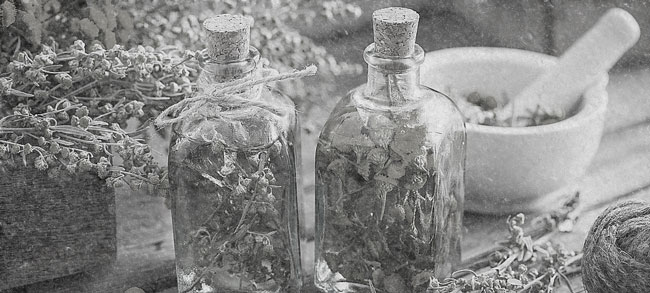
The history of absinthe is inextricably linked to the artists who enjoyed it, and the stories attributed to it. Wormwood, one of the major ingredients in the drink, is indigenous to Val-de-Travers in Switzerland, and was called the “sagebrush of the glaciers” by poet and artist Arthur Rimbaud.
The first recorded mention of absinthe was in 1792 by Swiss doctor Dr Pierre Ordinaire. He coined the name “la fée verte”, and prescribed it as a medicine for everything from epilepsy to kidney stones and gout. However, the drink would go on to become the most fashionable drink of the Belle Époque—the mid-1800s to early 1900s—in Paris. Absinthe was perceived as a muse to writers like Rimbaud and Oscar Wilde, the latter of whom wrote of his experience hallucinating after drinking it. Artists, including Manet and Picasso, made the drink so famous that drinking hour in Paris—five o’clock—was renamed the Green Hour.
SO WHERE, AND HOW, DID IT ALL GO SO WRONG?
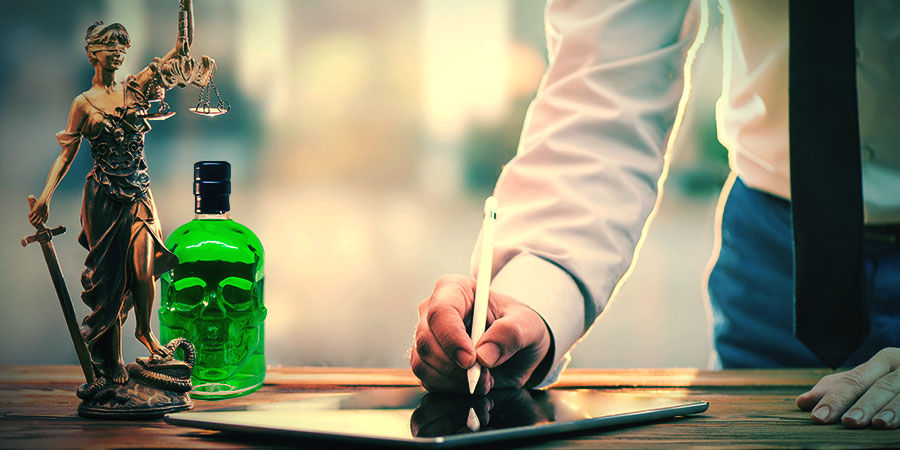
It comes back to Switzerland. In 1905, a 31-year-old farmer called Jean Lanfray drank an excessive amount of wine, cognac, brandy, crème de menthe, and, of course, two glasses of absinthe on an almost empty stomach—he’d only eaten a sandwich. Completely lost in an alcoholic stupor, Lanfray went home and killed his wife and their two children.
This was the time when the prohibition movement was gaining traction. After reports of the murder, public opinion started to turn against absinthe, which led to 82,000 signatures successfully calling for the drink to be outlawed. In the US, the ban came in 1908, and again in 1915. France introduced the ban to coincide with World War I. The ban claimed that absinthe served to "degenerate people", and that drinking absinthe was unpatriotic because it was Swiss.
Absinthe was banned in the US, as well as many European countries like France, the Netherlands, Austria, Switzerland, Belgium, and Hungary. These bans lasted in certain regions for almost a century. It wasn’t until 2007 that the US wrote a bill into law to reschedule almost all absinthe as completely legal for bars to sell, and people to drink. The only exception was absinthe that contains a substance known as thujone, a neurotoxin that, at higher doses, can cause confusion and epileptic spasms, but has also been associated with other symptoms such as dizziness, hallucinations, and delusions.
WHY DO PEOPLE THINK ABSINTHE CAN MAKE YOU HALLUCINATE?
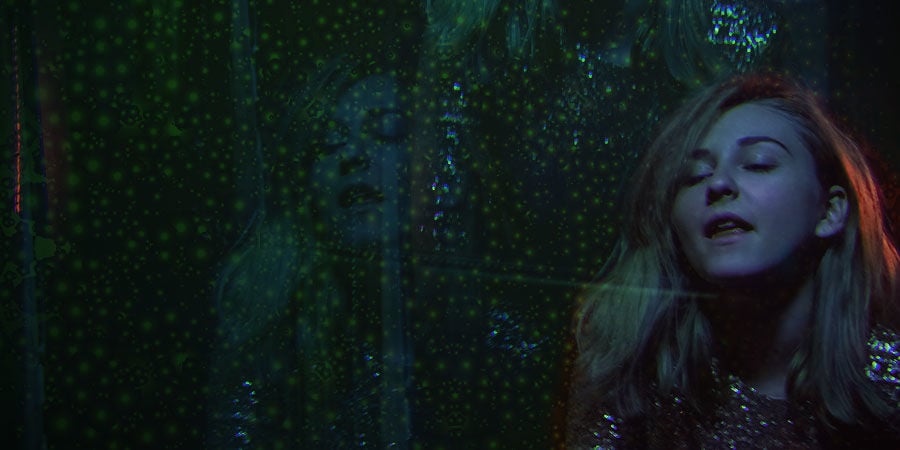
While absinthe was perceived as a muse to French artists, it’s the Irish writer Oscar Wilde who is responsible for the enduring myth that absinthe causes hallucinations. One night, after drinking a considerable amount of beer and absinthe, Wilde set to making his way home. As he attempted to navigate the streets, he looked down at his feet and made out the image of tulips sprouting from his legs and winding across his body as he walked. The tulips grew bright and vivid, and were increasingly life-like until he blinked heavily and they disappeared.
In spite of there being no evidence for why this might have happened, other than excessive drunkenness, Wilde maintained that the hallucination was caused by absinthe. This has helped contribute to the myth of the spirit's immense power. Thanks to Wilde’s place among the fashionable set, it also made absinthe even more popular among artists and writers.
Yet, none of that is to say that there was no danger in absinthe. However, this was less from the drink itself, but from adulterants that may have been added to cheap varieties.
CAN ABSINTHE CAUSE HALLUCINATIONS?
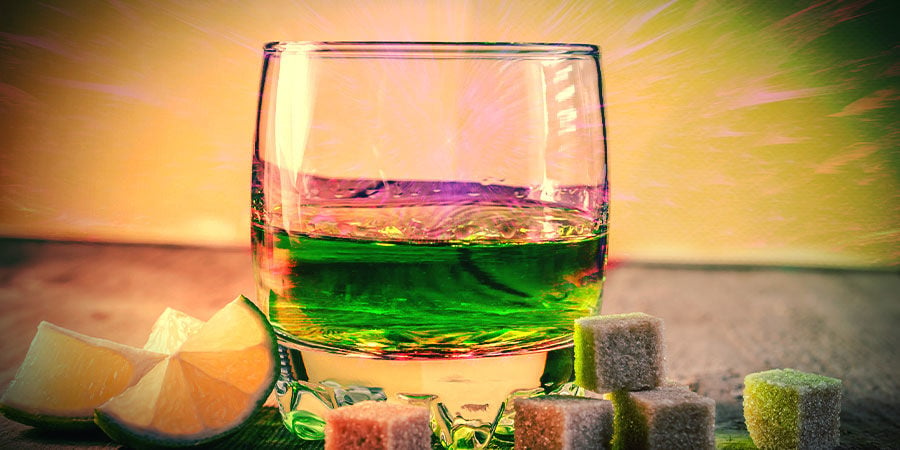
Er, well, no.
The ingredient in absinthe that has caused most of the controversy herein is called thujone, a naturally occurring compound in wormwood. Today, production of absinthe dictates that thujone be removed in order for the final product to be legal.
The truth is, at high doses, thujone can potentially be poisonous. At particularly condensed doses, like in a reduced oil or tincture, thujone can impact gamma-aminobutyric acid (GABA). The GABA neurotransmitter can mediate feelings of euphoria and dysphoria, but cannot give rise to hallucinations, unless a person has a pre-existing psychological condition. Thujone overdoses can lead to a loss of motor skills, as well as convulsions and seizures. However, the amount of thujone contained in traditional absinthe is unlikely to cause any harm in moderation. To do considerable damage, a drinker would probably first succumb to alcohol poisoning before thujone poisoning.
- (n.d.). Myth, reality and absinthe – The Absinthe Encyclopedia by David Nathan-Maister – Absinthes.com - https://www.absinthes.com
-
 5 min
31 March 2025
Is it possible to have a psychedelic experience on cannabis?
Cannabis can sometimes cause very intense highs, and these might feel trippy or even conjure up experiences that might feel like (or may even be) hallucinations. But can it cause a true psychedelic...
5 min
31 March 2025
Is it possible to have a psychedelic experience on cannabis?
Cannabis can sometimes cause very intense highs, and these might feel trippy or even conjure up experiences that might feel like (or may even be) hallucinations. But can it cause a true psychedelic...
-
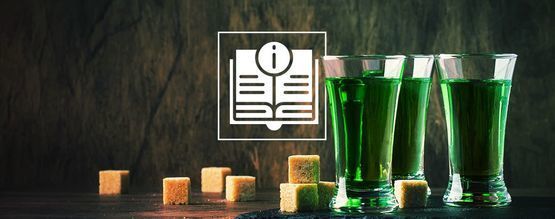 5 min
27 January 2021
Absinthe: Everything You Need To Know
Absinthe is a fascinating beverage in many ways. From the unique ingredients to the controversial history, there's a lot to learn about this spirit, and we’re excited to teach you about it!
5 min
27 January 2021
Absinthe: Everything You Need To Know
Absinthe is a fascinating beverage in many ways. From the unique ingredients to the controversial history, there's a lot to learn about this spirit, and we’re excited to teach you about it!
-
 2 min
2 February 2017
How To Make Absinthe At Home
For anyone interested in trying absinthe, why not opt for the Absinthe Starter Kit? This kit provides the opportunity to make your own absinthe at home, without the risk of bringing about another...
2 min
2 February 2017
How To Make Absinthe At Home
For anyone interested in trying absinthe, why not opt for the Absinthe Starter Kit? This kit provides the opportunity to make your own absinthe at home, without the risk of bringing about another...
-
 4 min
14 November 2016
5 Myths About Absinthe
Absinthe, the green fairy has made its revival in Europe after decades of being banned. Many myths deserve to be busted. Let's do it for the green fairy!
4 min
14 November 2016
5 Myths About Absinthe
Absinthe, the green fairy has made its revival in Europe after decades of being banned. Many myths deserve to be busted. Let's do it for the green fairy!






 United States
United States











